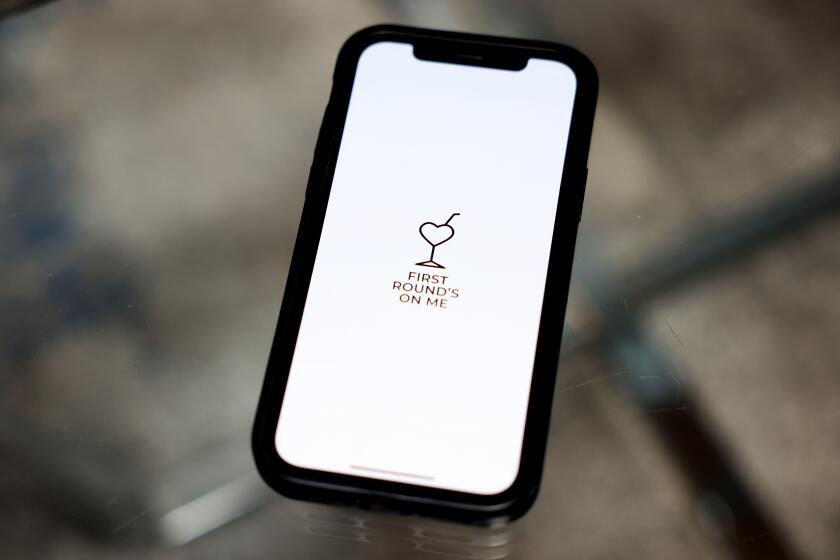Outsourcing raises food safety worries
WASHINGTON — Try searching for a culprit in the 90 brands caught up in the recent recall of canned chili, stew and other products, and you weave back to a single manufacturer.
That also was the case in recalls of spinach, pet food and frozen meat.
Companies increasingly are paying others to make the foods we eat -- or the ingredients in them -- and then selling it under multiple brand names. And that has prompted a growing debate about food safety.
“If people cannot trace a product back to a supplier, the supplier has no incentives to keep their processes as clean and effective, in terms of food safety, as possible,” said Caroline Smith DeWaal, director of food safety for the Center for Science in the Public Interest, a consumer group.
But the food industry and regulators chalk up to coincidence the rash of recent major food safety recalls and the consolidation of food production.
“One reason we are seeing this is because it’s becoming a common industry practice,” said Dr. David Acheson, who leads the Food and Drug Administration’s food safety efforts. Acheson said he knew of no evidence that outsourcing production was inherently less safe than traditional arrangements in which companies made what they sold.
Outsourcing makes sense for companies unwilling or unable to establish or expand manufacturing operations. Established manufacturers can use excess capacity to fill orders for others.
For some specialty products that require expensive machinery -- such as pet food -- a limited number of contract manufacturers, such as Menu Foods, make products that are sold under dozens of brands.
“Being able to develop a product without having to sink a lot of money into fixed, tangible capital is every entrepreneur’s dream,” said Michael Sykuta, director of the Contracting and Organizations Research Institute at the University of Missouri-Columbia.
Store-brand or private-label products account for much of the growth in the food outsourcing business. Supermarkets, drugstores and mass merchandisers ring up more than $65 billion in store brand sales annually.
That amounts to 1 in every 5 items they sell, according to the Private Label Manufacturers Assn.
But critics of the outsourcing of production warn that it increases the vulnerability of the food supply. The manufacturer no longer is directly accountable to consumers but to other companies, they maintain.
That makes for a long supply chain with several stops before a product reaches consumers, said Jean Kinsey, co-director of the Food Industry Center at the University of Minnesota. “And not everyone along the way has the same vested interest in its safety.”
The Grocery Manufacturers Assn. counters that there would be no reason for co-manufacturers or co-packers to skimp on food safety.
“If we use the classic term ‘barking up the wrong tree,’ that would be the case here,” said Craig Henry, who helps oversee scientific and regulatory activities at the industry group.
But some food safety advocates say that when problems arise with foods made under contract, sorting out who made what can delay recalls or public health warnings.
Last month, the FDA for hours delayed issuing a warning about botulism contamination in canned products, until it could sort out the brands under which the Castleberry’s Food Co. product was sold.
This spring’s series of recalls of cat and dog food made with chemically tainted ingredients from China began in mid-March and stretched to late May.
“I’m not telling you it is a system that is optimal for consumers. What we are trying to do is make the response part faster,” the FDA’s Acheson said.
He expressed concern about a recall “dribbling on for two months” but said that was better “than not saying anything and waiting for two months.”
Generally, the identities of contract manufacturers remain secret for reasons of commercial confidentiality. So how can consumers learn where their food comes from?
“The truth of the matter is today, to a large degree, you can’t . . . and efforts to improve on it have been beaten back,” said Jean Halloran, director of food policy initiatives for Consumers Union.
For example, she said, there has been a long delay in requiring that imported fruits and vegetables be labeled with their country of origin.
The difficulty of linking a product to a particular lot or manufacturer has been a major problem in some food safety cases, consumer advocates said.
When salmonella contamination led ConAgra Foods Inc. to recall Peter Pan-brand peanut butter earlier this year, it also recalled Great Value peanut butter it made for Wal-Mart Stores Inc. The FDA said at the time that other Great Value peanut butter, made by other manufacturers, wasn’t affected by the recall.
In the peanut butter case, the lids of the jars -- regardless of brand -- were consistently marked in a way that made it easy to find the product code being recalled, DeWaal said.
That’s not always the case.
“Traceability is critical to ensuring processors use the highest standards of care,” DeWaal said. “When their identities are hidden behind multiple labels and poor traceability information, they can use whatever practices they want because they’re probably not going to get caught.”
More to Read
Inside the business of entertainment
The Wide Shot brings you news, analysis and insights on everything from streaming wars to production — and what it all means for the future.
You may occasionally receive promotional content from the Los Angeles Times.










